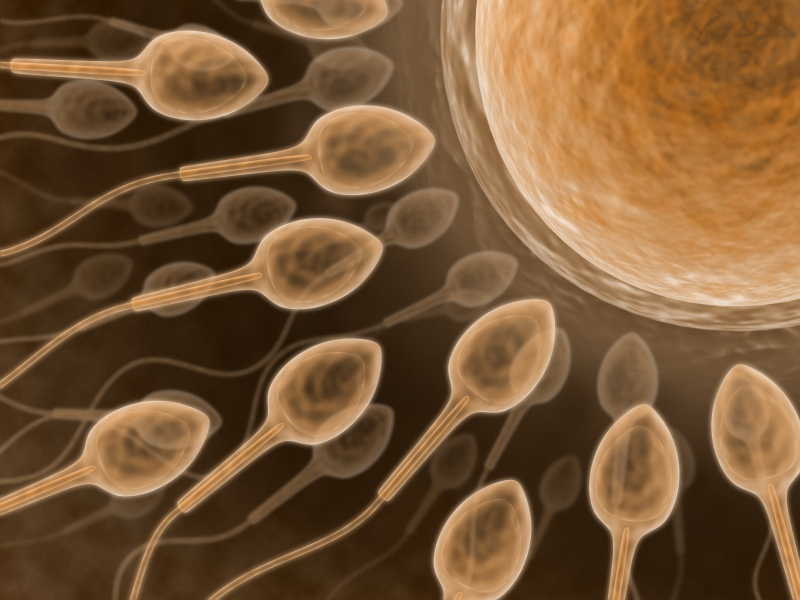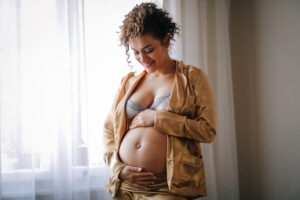Ancient Customs, Modern Fertility Treatments
Why did eggs become fertility symbols? Eggs figure in many traditions, both Christian and many others which are more ancient. Probably the origin was in observing birds building nests and laying eggs in the spring. Eggs became associated with spring, which symbolized new life, fertility and growth.

In ancient Egypt, Greece, Rome and Persia eggs were dyed as part of spring festivals. The Romans believed “All life begins with an egg,” and started major feasts with a first course of eggs. The early Christians considered eggs to be “the seed of life,” perhaps derived from the Roman tradition.
So eggs came to symbolize fertility to humans long before it was known that women and other mammals produce eggs, too, and that their eggs are fundamental to having an offspring.
Ova, Ovulation and Fertility Issues
The medical term for a woman’s egg is ovum, from the Latin word for egg. That’s where the term “ovulation” comes from, and “ovary” as well. Ovulation is the point in your menstrual cycle when the mature egg is released from the follicle. Then it enters fallopian tube where it can be fertilized by sperm. The few days surrounding ovulation are a woman’s most fertile period. If the egg is fertilized and is able to implant on the lining of the uterus an embryo will begin to grow.
Until recent decades infertility was thought to be a “woman’s problem,” and many cultures still treat women harshly who do not have children. The truth is, in many cases both the male partner and the female partner have fertility issues. Modern medical science has found that as much as 40% of infertility problems are due to male factors.Let’s look at eggs and their role in infertility.
Infertility Problems Related to Ovulation
A woman is born with all the eggs she will ever have. Starting at puberty her ovaries will produce one egg (or more, in rare cases) each menstrual cycle. As she gets older, her eggs age, too.Age is a factor in ovulation problems—women 35 or over are more likely to have issues with producing good quality eggs. If you see a fertility doctor, she or he may schedule blood tests to evaluate your “ovarian reserve” which include levels of several hormones. These include follicle stimulating hormone (FSH) and luteinizing hormone (LH) which cause your eggs to ripen and detach from the ovary, and antimullerian hormone (AMH) which is a substance made by cells in the ovarian follicles where the eggs reside.Polycystic ovary syndrome (PCOS) is a hormone-related condition in which the ovaries are often enlarged and have many small cysts, hence the name “polycystic.” Women with PCOS often have difficulty getting pregnant because they don’t ovulate on their own. Another very common cause of infertility is endometriosis, a condition which can cause scar tissue to prevent the fallopian tubes from receiving the eggs from the ovaries. Thirty to 50 percent of women with fertility problems have endometriosis, according to the American Society for Reproductive Medicine (ASRM.)
What’s the Solution to Ovulation-Related Problems?
If you are 34 years of age or younger and have been trying to get pregnant for a year without success, it may be the right time to consult a reproductive endocrinologist, a fertility specialist who is an expert on reproductive problems. If you are 35 or older and have been trying for six months, or 40 and have been trying for three months, it’s time to pursue treatment.It’s essential to get the correct diagnosis and treatment plan, based on an evaluation of both partners. Depending on your diagnosis, your doctor may recommend fertility medications to allow you to ovulate or perhaps IVF treatment. In vitro fertilization puts the egg and the sperm together in the laboratory, avoiding any blockages in the fallopian tubes. The treatment protocol encourages your body to produce multiple eggs at once but makes multiple births less likely than fertility drugs alone, since you and your doctor decide how many embryos to implant. Transferring a single embryo may be the safest option in women at risk for multiple births. IVF also makes it possible to use donor eggs from younger women, which can make pregnancy much more likely for a woman 40 or over.
 In ancient Egypt, Greece, Rome and Persia eggs were dyed as part of spring festivals. The Romans believed “All life begins with an egg,” and started major feasts with a first course of eggs. The early Christians considered eggs to be “the seed of life,” perhaps derived from the Roman tradition.
So eggs came to symbolize fertility to humans long before it was known that women and other mammals produce eggs, too, and that their eggs are fundamental to having an offspring.
In ancient Egypt, Greece, Rome and Persia eggs were dyed as part of spring festivals. The Romans believed “All life begins with an egg,” and started major feasts with a first course of eggs. The early Christians considered eggs to be “the seed of life,” perhaps derived from the Roman tradition.
So eggs came to symbolize fertility to humans long before it was known that women and other mammals produce eggs, too, and that their eggs are fundamental to having an offspring.


